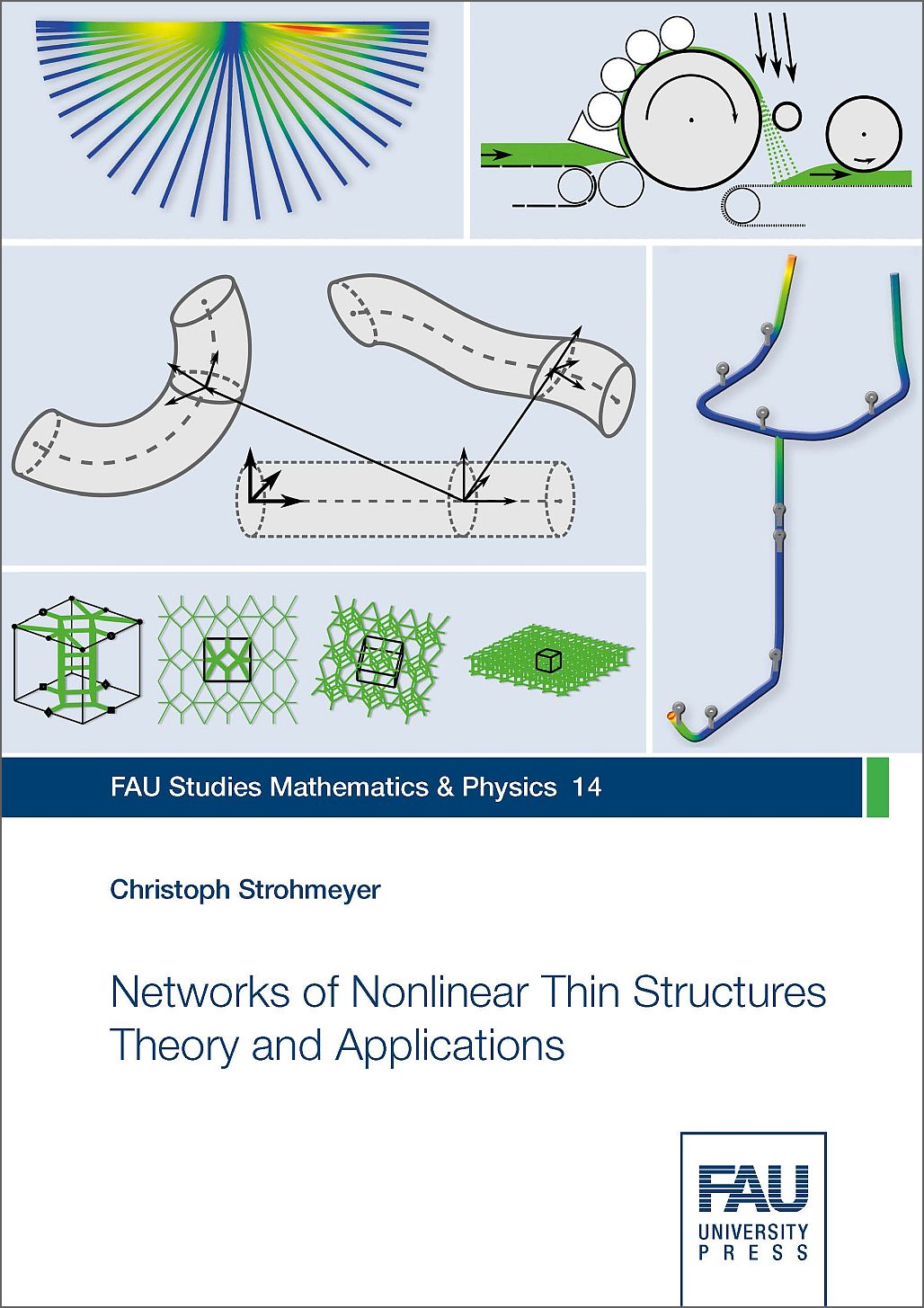Description
This thesis is concerned with modeling, analysis and applications of one-dimensional continua and networks thereof. More precisely, we use the pre-curved and -twisted three-dimensional geometrically exact beam theory to rigorously deduce several well-known models: the pre-curved two-dimensional geometrically exact beam, the pre-curved and -twisted three-dimensional linear Timoshenko beam, as weil as the geometrically nonlinear truss and string.
Based on the abstract theory of first-order quasilinear hyperbolic systems, we show in the second part of this thesis local exact boundary controllability and observability for the second-order system of pre-curved two-dimensional geometrically exact beams. Additionally, we formulate an optimal control problem for this system, derive the adjoint equation and identify conditions, that allow for classical adjoint states.
The one-dimensional models given in this thesis are used in different applications. First, we develop a numerical scheme that solves the optimal control problem for two-dimensional geometrically exact beams. Subsequently, we employ the concept of energetic homogenization to determine effective material properties of a Kirchhoff-Love plate from networks of linear Timoshenko beams and optimize their geometry. With a similar idea, applied at two levels, non-periodic networks of nonlinear strings are homogenized in order to match the behavior of non-woven fiber mats. Finally, the damaging of high-pressure pipes is investigated, which requires a nonlinear path-dependent material law coupled to the three-dimensional geometrically exact beam. In this scenario a creep-damage material law is modeled, numerically implemented and its feasibility to describe piping systems demonstrated.


Reviews
There are no reviews yet.